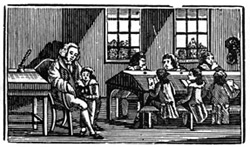Why does busy work even exist in schools?
In the days before break, whether it be summer, winter, spring or Columbus Day, teachers and students are hit with an anxiousness that detracts from ultimate productivity. Teachers don’t want to grade, students don’t want to sit in class.
The solution: busy work. Multiple-choice quizzes, word searches, crossword puzzles, fill-in-the-blank worksheets, etc. The argument for these types of assignments is that they provide exposure to the material in a fun or easy format. In reality they are popular because they keep students busy working on something and they are easy to grade. They are better than watching a movie – right? Not necessarily.
In reality, whether a student learns something is going to depend on whether that student sees that the information is important enough to retain for the long term. This is why a student who loves baseball can remember every statistic from a season five years ago, but can’t remember that 3×7=21. Handing a student a worksheet and asking them to fill in the blanks is the same as handing them a book and asking them to count the complete sentences on each page.
There are alternatives to busy work that can actually engage students, but do not increase the grading load on the teacher.
Rather than filling in blanks or marking the correct answer, students will enjoy a short project much more. Especially if the project is collaborative and relevant.
Group projects are always tricky because there is always at least one person who fails to contribute to the group. An easy work-around for this project is to allow group research, but individual completed assignments.
For example, in a chemistry class, a teacher can break the class into groups of three. Then ask the group to come up with 15 people who changed the world of chemistry – Google, Wikipedia and cellphone use are all allowed (or less depending on time, but it should be divisible by the number of people in the group). Give the students half an hour to come up with the 15 names. The graded part could come in the second half of class when the students are asked to write a three sentence summary of why five of those people are considered significant to the field. Each students must turn in his/her own summary and no two people in the group can write about the same person. Therefore, if a group of three is assigned to come up with 15 names, each student will write a summary for five of the names.
This type of exercise can apply to any subject: The 20 greatest mathematicians, The 12 greatest inventions of the 1800s, 10 most significant poets/poems in history, etc.
The goal is to keep the kids busy with a project that will not only enhance their appreciation for the subject, but also promote a sense of useful work.
MindShift, a PBS project that promotes the advancement of education, recently wrote about his concept on their blog.
For Students, the Importance of Doing Work That Matters | MindShift.
Related articles





